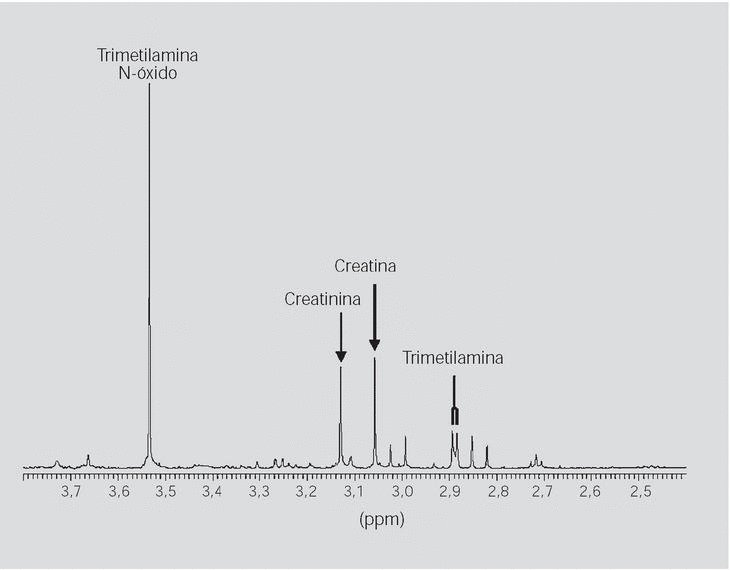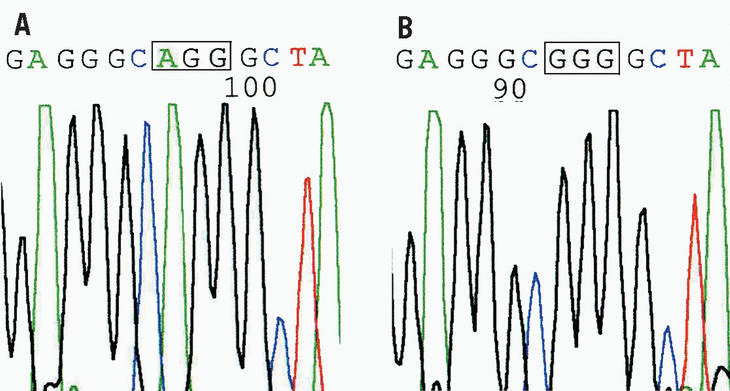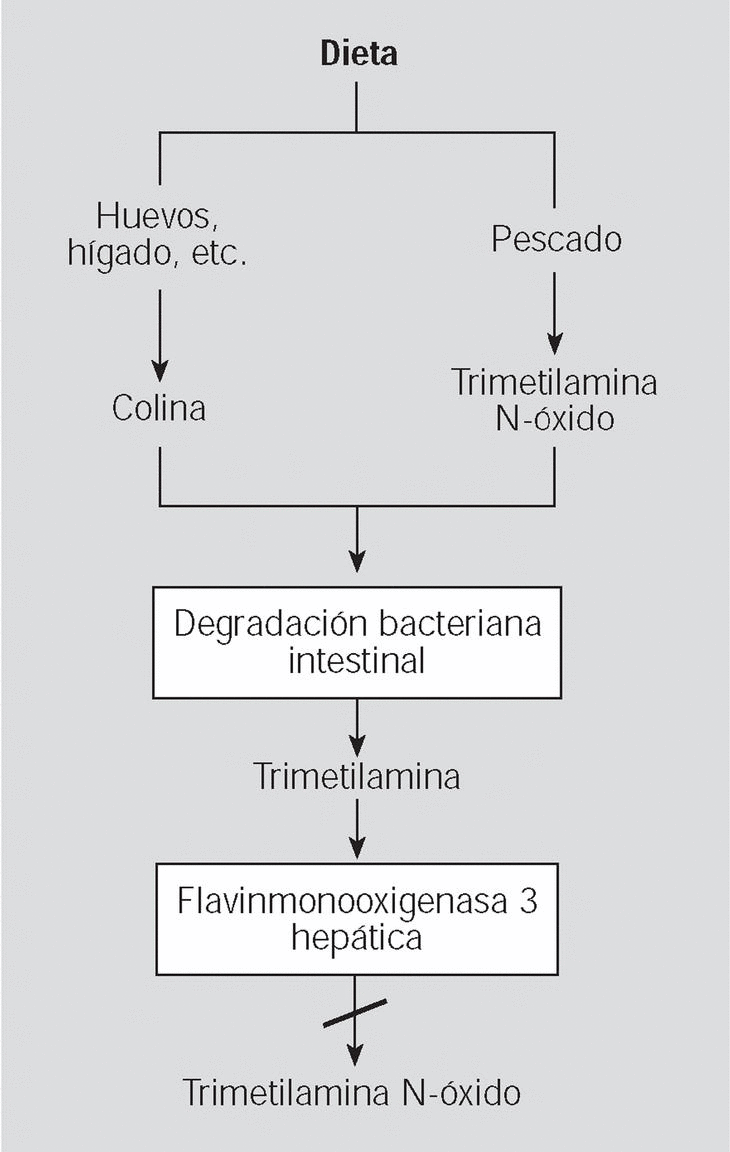Fundamento y objetivo: La trimetilaminuria o síndrome del olor a pescado es una metabolopatía producida por un trastorno en la oxidación hepática de trimetilamina (TMA) en trimetilamina N-óxido (TMAO). La trimetilaminuria primaria es una enfermedad autosómica recesiva. Los valores elevados de trimetilamina confieren un desagradable olor a pescado a la orina y otras secreciones de los pacientes. Se describe un caso de trimetilaminuria primaria en una niña de 4 años.
Paciente y método: Niña de 4 años que presentaba desde los 9 meses, coincidiendo con la introducción del pescado en la dieta, un intenso olor corporal y de la orina a pescado. El desarrollo psicomotor y ponderoestatural eran normales, así como las pruebas de función renal y hepática. El diagnóstico bioquímico se realizó midiendo los valores de TMA y TMAO en orina por espectroscopia antes y después de la ingestión de pescado.
Resultados: El estudio genético de la paciente demostró que era homocigota para una nueva mutación en el exón 3, R51G (c. 151 A > G) del gen de flavinmonooxigenasa 3, y sus padres, heterocigotos.
Conclusiones: La mutación R51G (c. 151 A > G) no había sido encontrada previamente en otros pacientes diagnosticados de trimetilaminuria.
Background and objective: Trimethylaminuria or fish odor syndrome is a metabolic disorder characterized by a failure in the oxidation route from trimethylamine (TMA) to trimethylamine N-oxide (TMA-O). Primary trimethylaminuria is an inherited autosomic recessive disease due to mutations in the human FMO3 gene. High levels of free TMA in urine and other body fluids confer an unpleasant body odor resembling that of fish. Here we report a case of primary trimethylaminuria in a 4-year-old girl.
Patient and method: A 4-year-old girl who presented with a strong corporal scent resembling that of fish from the age of 9 months agreeing with the introduction of fish in the diet. The patient did not have other relevant personal history and had a correct psychomotor and growing development. Liver function, urea and creatinine levels were normal. The biochemical diagnosis was done by spectrometry, measuring the amount of TMA and TMA-O prior to and after fish intake.
Results: Genetic analysis evinced that the patient was homozygous for a novel mutation in exon 3, R51G (c. 151A > G). Both parents were heterozygous.
Conclusions: R51G (c. 151 A > G) mutation had not been found in other patients with trimethylaminuria.
Artículo
Comprando el artículo el PDF del mismo podrá ser descargado
Precio 19,34 €
Comprar ahora










